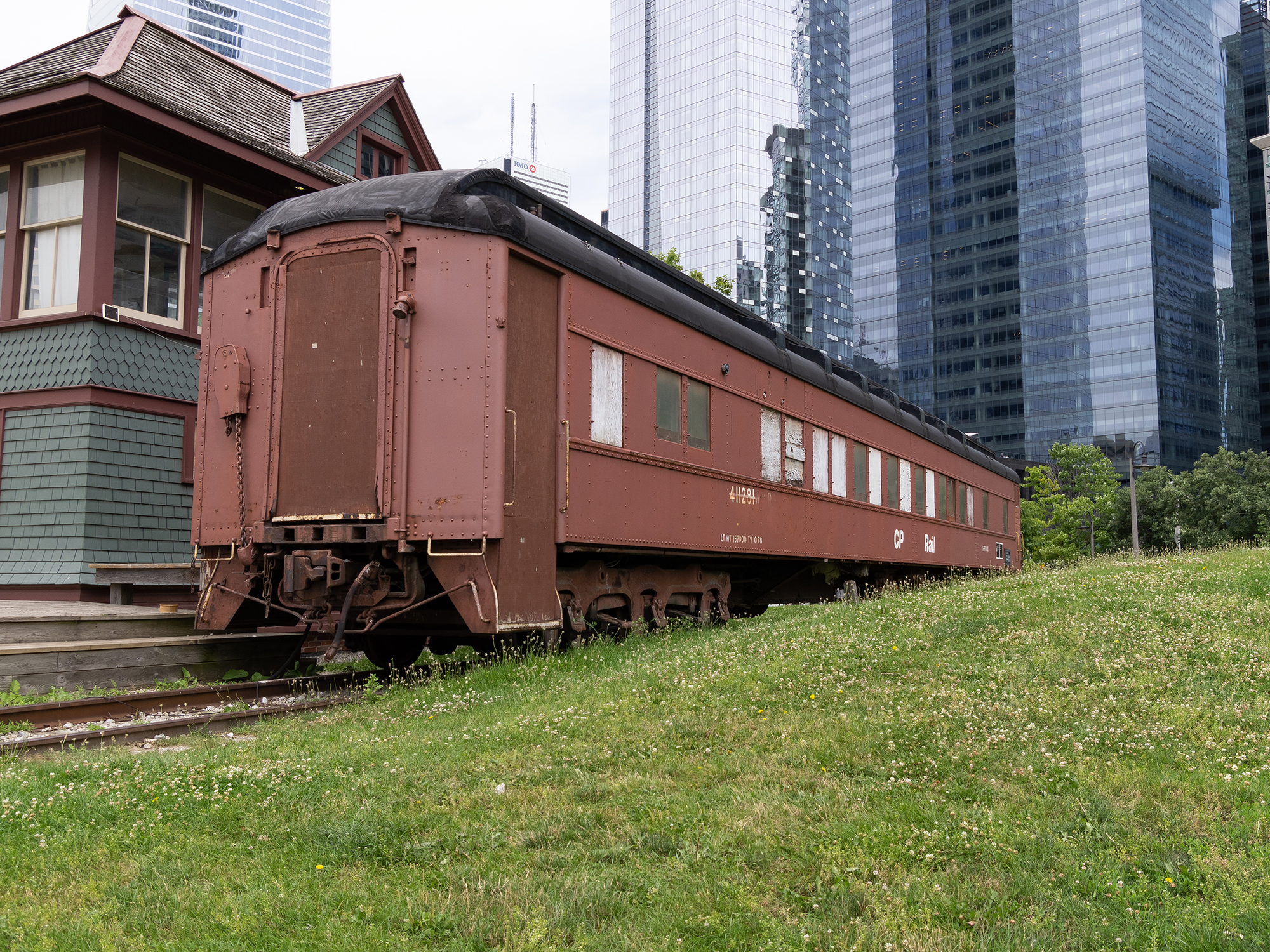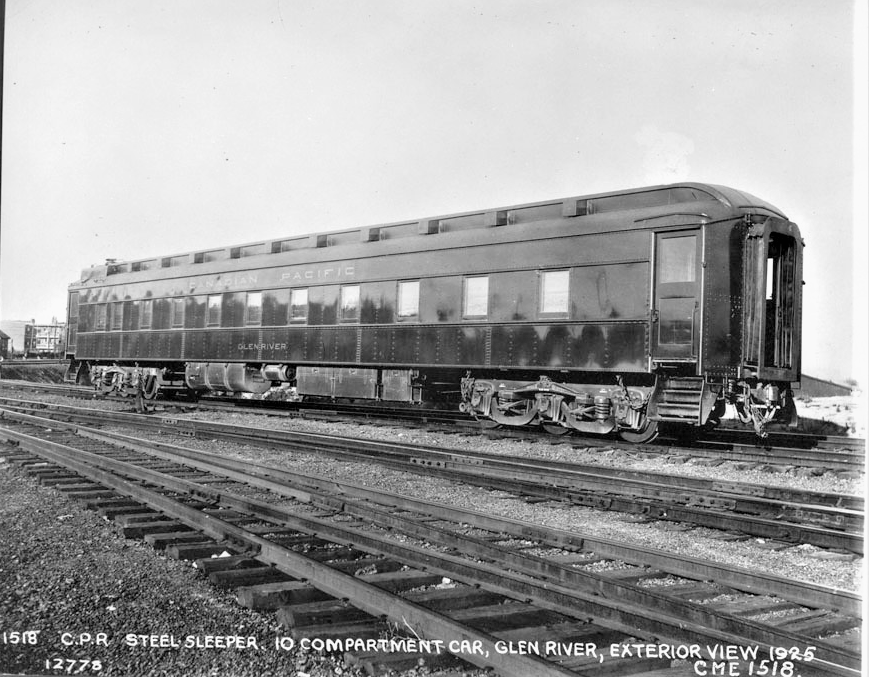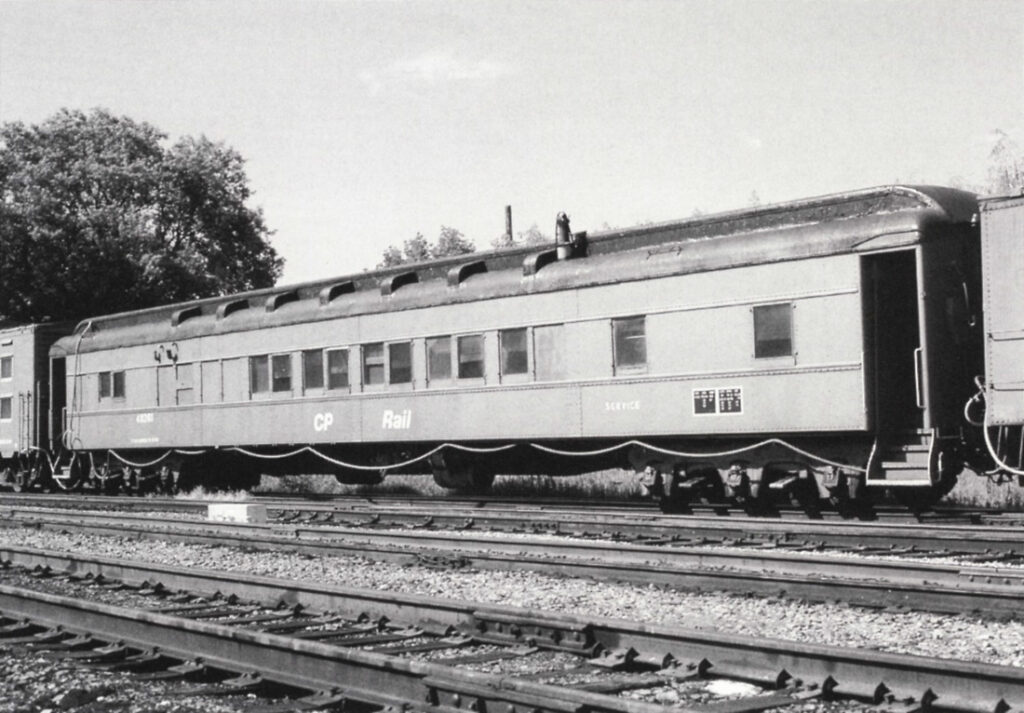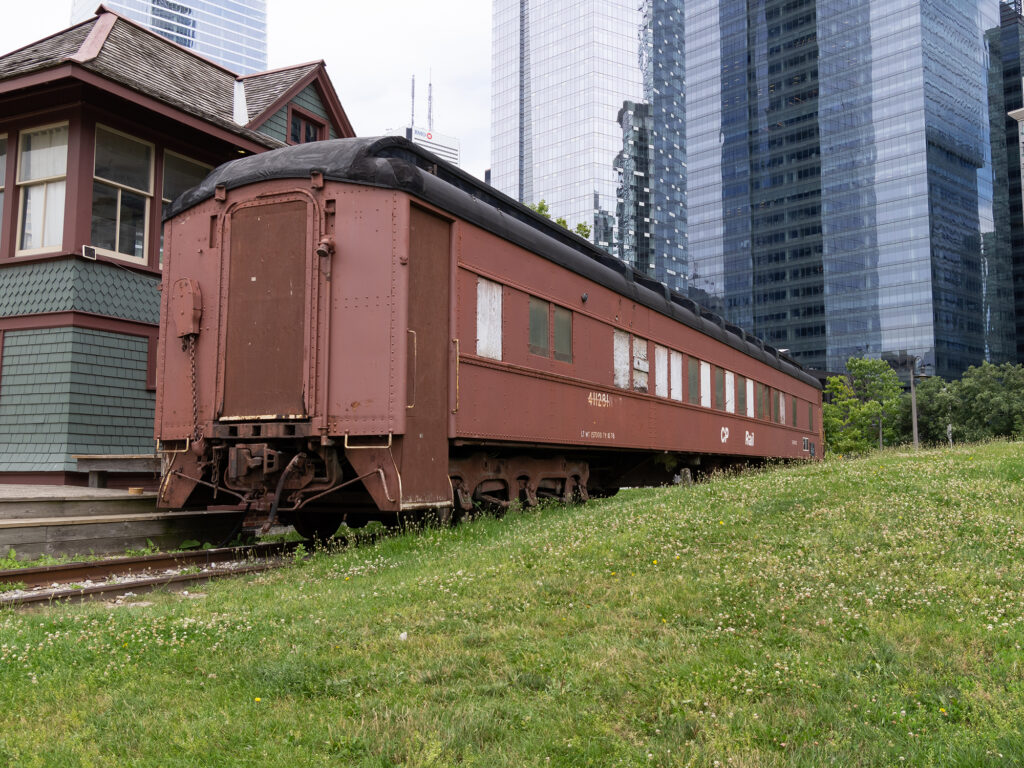Jackman is a heavyweight 14-section sleeping car constructed by Canadian Car & Foundry in 1931, and finished in Canadian Pacific’s Angus Shops in Montreal. In that era, Canadian Pacific named their first class cars after communities or geographical features served by the railway, and cars of the same type ordered together often followed a specific naming convention in which they shared a common first letter. There were only four cars of the J-type, the others being Jaffray, Jellicoe and Joliette. Jackman was named after the town of Jackman, Maine, which was historically located on Canadian Pacific’s International of Maine Division. The segment of track through Jackman was sold off by Canadian Pacific in 1995, but the community became CP territory again with their acquisition of the Central Maine & Quebec Railway in 2020. After Jackman was retired from revenue service in 1960, it was converted for use by Maintenance Of Way crews and repainted during or after 1968. In doing so, Jackman lost its name and simply went by the number 411281 from that point onward. The car was retired from service in 1988 and subsequently donated to the City of Toronto, who stored it in the John Street Roundhouse where it remained for a few decades until the opening of the Toronto Railway Museum in 2010.
Jackman is currently one of the few pieces of rolling stock in our collection that has yet to be restored. Much of the car’s interior was modified or removed altogether, and the exterior must be cleaned up and repainted as well. Nevertheless, we consider the car eminently restorable and plan to make it a keynote of our display on the history of immigration, railways and the development of Toronto.
History
Jackman’s accommodation consisted of seven sets of upper and lower berths or bunks along each side of the car. Each section was comprised of an upper and lower berth and the car could contain a total of 28 passengers. During the day, the lower berth converted into a pair of facing coach seats; at night, these seats became one bed and an upper berth or bed folded down out of the wall and ceiling area. Only the lower berth had a window. Privacy was assured by the hanging of heavy curtains in the aisles. To access the upper berth, it was necessary to climb a small ladder. Beds were prepared, curtains arranged and ladders provided by sleeping car porters, a profession that was traditionally reserved for men of colour at the time.
At each end of the car, there was a large washroom – one for men, with a smoking lounge, and one for women, without a smoking lounge but with additional sinks, mirrors and other amenities. These cars were generally not air conditioned until after 1945.
Jackman is representative of the generation of all-steel passenger cars built for North American railroads after 1918. Prior to the First World War, most passenger cars were constructed of wood or some combination of wooden exterior held up by a steel or iron frame. Jackman is described as a heavyweight because it is ballasted with concrete to make it heavier than its steel construction and interior appointments would make it. Up to thirty tons of concrete would be added during the construction process, mainly between major frame members; it was believed that this additional weight helped the long-wheelbased six-wheel trucks or bogies produce a smoother ride over the jointed rail of the period. These cars often weighed 90 tons or more. Subsequent streamlined lightweight cars did not contain concrete ballast and were constructed of lighter materials such as stainless steel or even aluminum. They would weigh about 60 tons. This allowed for longer trains and higher speeds, but ride quality was sometimes an issue.
Immediately following its construction in 1931, Jackman was assigned to the Red Wing between Montreal and Boston as well as an unnamed service between Montreal and Saint John, New Brunswick. As such, the car would have regularly passed through the town it was named after. During World War Two it was likely used as a troop carrier, and after the war it was relegated to standby service in which it could be used on special trains, extra sections, or as additional accommodations during the holiday rush.
Such cars were widely used by families, commercial travellers (salesmen with territories), and by immigrants. It is in the latter connection that we believe Jackman has the most significance for Toronto, as several successive waves of immigration moved up from Halifax, Saint John and the St. Lawrence River ports to this City in just such cars on the Canadian Pacific or Canadian National. Just as Pier 21 is the Ellis Island of Canada, so, too, Jackman is part of the story of the arrival of hundreds of thousands of new Canadians in this City.





